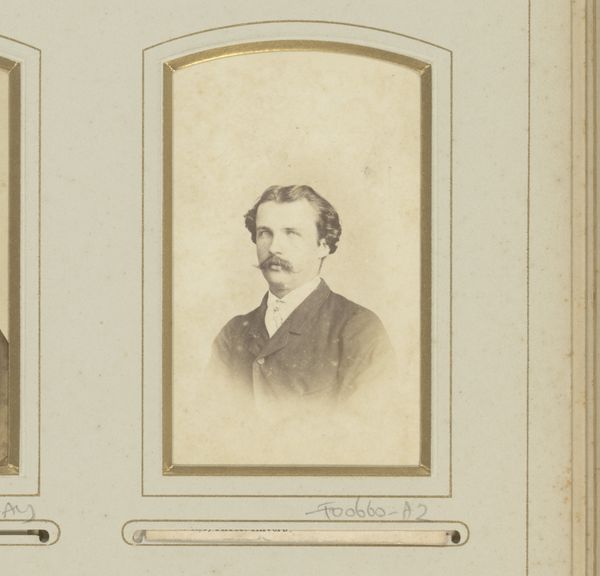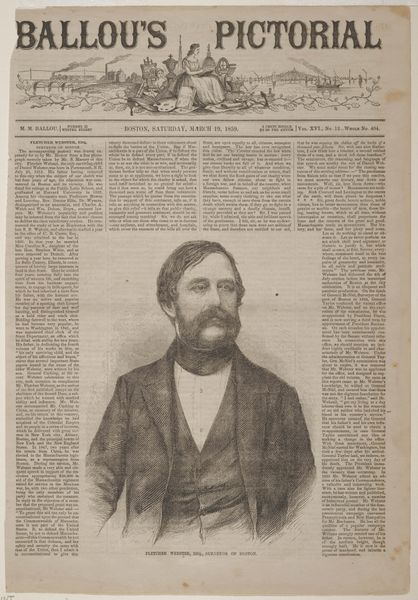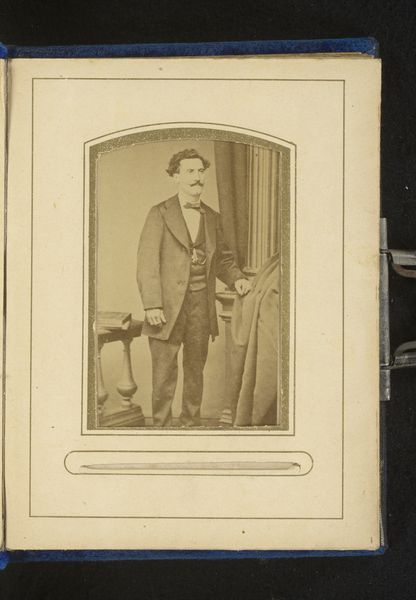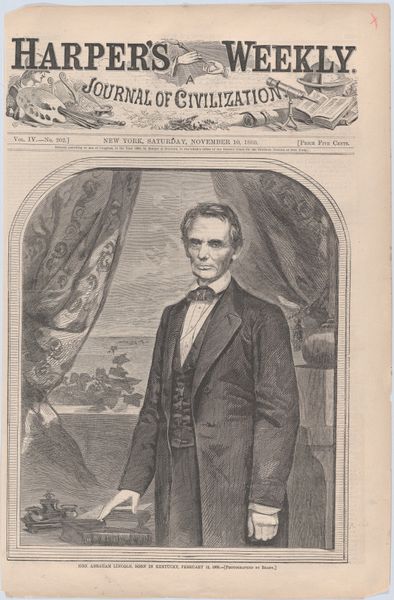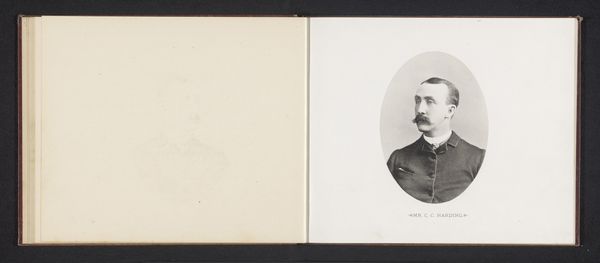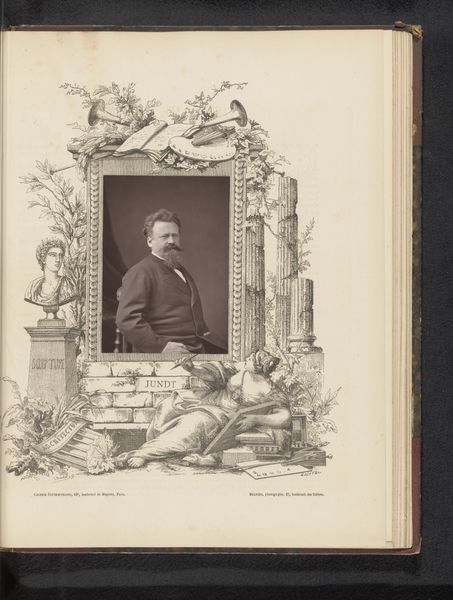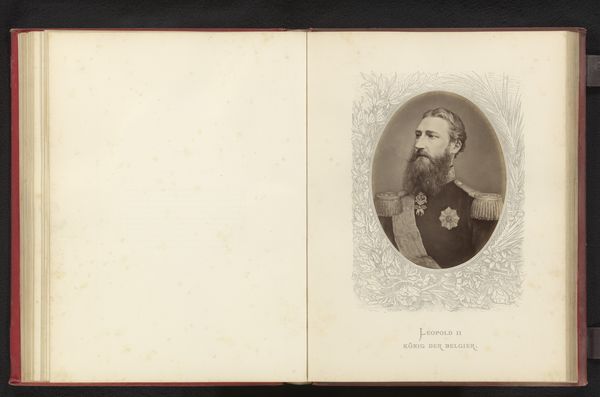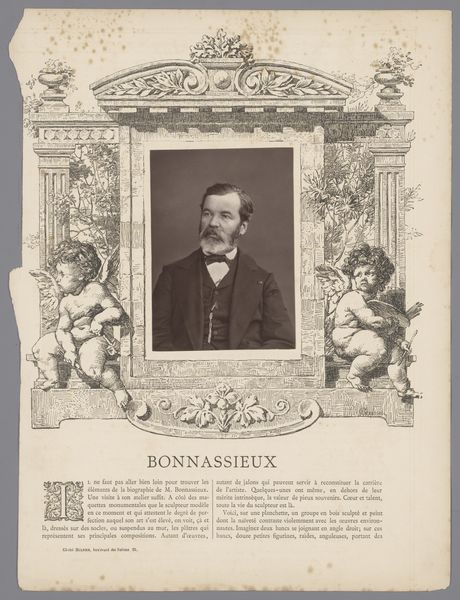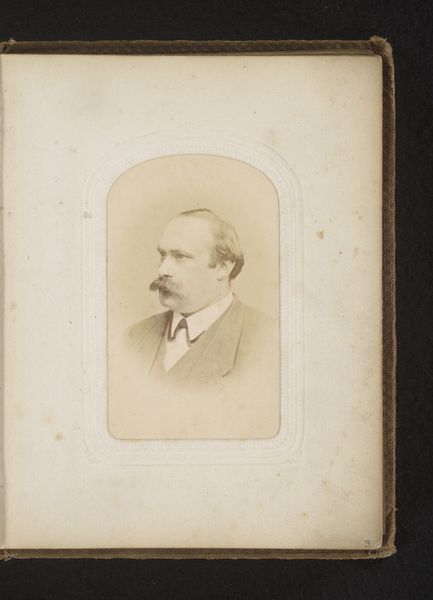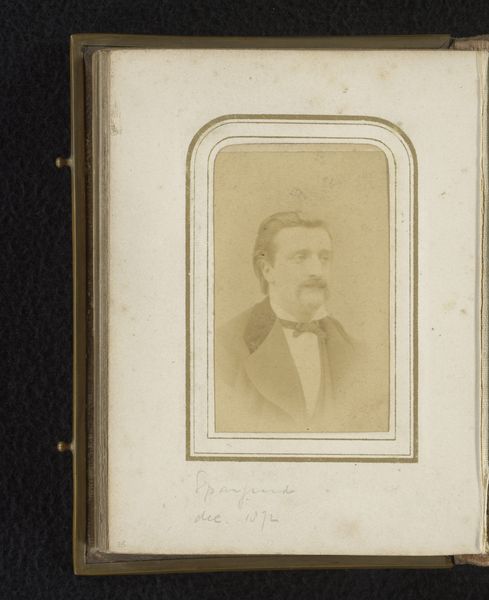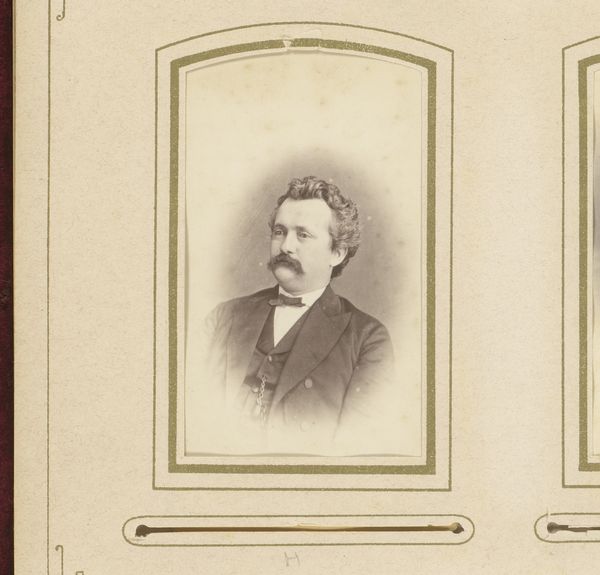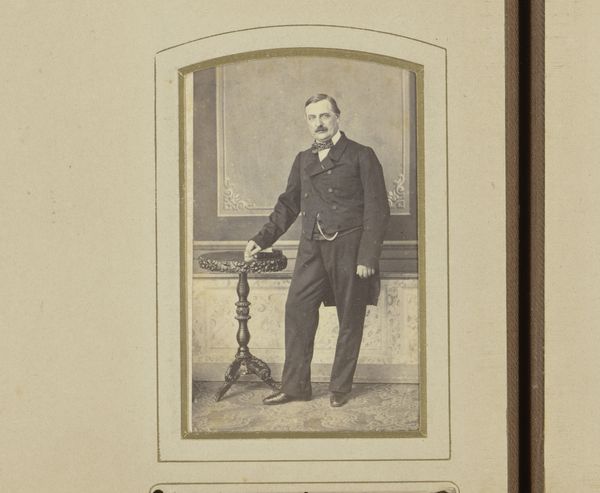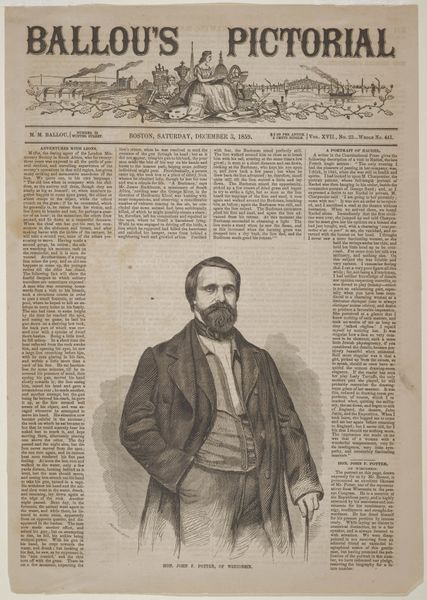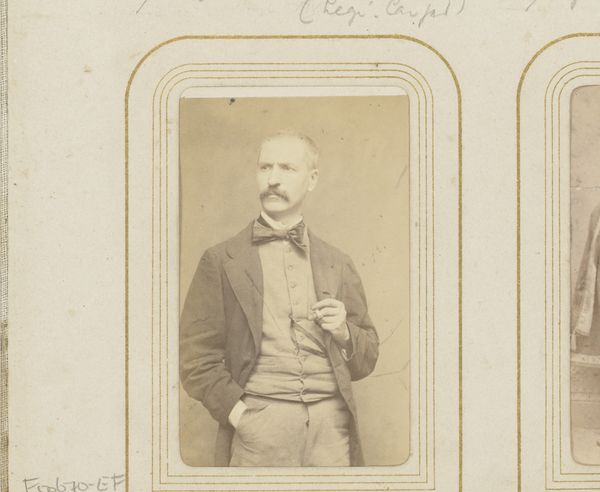
Governor McGill, Minnesota, from "Governors, Arms, Etc." series (N133-2), issued by Duke Sons & Co. 1885 - 1892
0:00
0:00
drawing, lithograph, print
#
portrait
#
drawing
#
lithograph
# print
#
caricature
#
caricature
#
history-painting
Dimensions: Sheet (unfolded): 2 3/4 × 4 5/16 in. (7 × 11 cm) Sheet (folded): 2 3/4 × 1 3/8 in. (7 × 3.5 cm)
Copyright: Public Domain
Editor: This is "Governor McGill, Minnesota," a lithograph print from around 1885, made by W. Duke, Sons & Co. It's odd, like a little collage of Minnesota symbols with the Governor's portrait in the middle, and also, it’s advertising cigarettes. What's your take on this peculiar piece? Curator: It's more telling than peculiar. Think about the power structures at play here. This isn't just an advertisement; it’s a visual document embedded in a specific socio-political landscape. Consider the idealized images of Minnesota--the falls, the agriculture, rendered next to a product deeply entwined with exploitation of labor, and McGill. What’s the relationship between these images of “progress” and the realities of labor, land, and bodies during this period? Editor: I hadn't considered that contrast so starkly. The idealized images versus the realities... I suppose it’s naive to think they would represent things honestly, right? Curator: Exactly! Tobacco agriculture especially comes with baggage that can’t be ignored. What bodies were harvesting the tobacco? Whose lungs were damaged by the product? These pretty images work to mask that reality, connecting power and profit. Editor: So, it’s like this image tries to tie ideas of wealth, the state, and this product together to distract from what's happening in the margins? Curator: Precisely! And in doing so, it reveals a whole network of complicity. We should question every component within the frame and what it implies within its time. Editor: I see the artwork in a totally different light now! I was focused on the visuals, but understanding its context brings out a hidden narrative of the society behind it. Curator: It always does! When you contextualize this with broader discussions about identity, power, and representation, you understand this small image and its influence, as well as, larger structural forces.
Comments
No comments
Be the first to comment and join the conversation on the ultimate creative platform.
